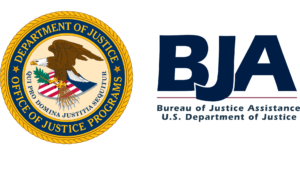Wyoming: Monitoring Data Trends after 2019 Justice Reinvestment Initiative Reforms
In 2018, Wyoming sought technical assistance under the Justice Reinvestment Initiative (JRI) program to address various challenges in the state’s criminal justice system. The policies adopted by the state were reflected in House Enrolled Acts (HEA) 45 and 53 and Senate Enrolled Acts (SEA) 19 and 50, which were signed into law in February 2019, and HEA 62, which was signed into law in February 2020. Wyoming is three years into the implementation of the initial pieces of Justice Reinvestment Initiative legislation. Within this time, the DOC has modified the Positive Rewards Incentives Sanction Matrix incentives and sanctions structure for the community supervision system. The state has also begun implementing the follow-on legislation, HEA 62. This legislation established a Quality Improvement Unit within the DOC and requires DOC, in collaboration with WDH, to develop standardized, evidence-based guidelines for behavioral health treatment for people in the justice system and expand the sharing and acceptance of substance use assessment results. To date, Wyoming has experienced a reduction in the prison population without seeing an increase in crimes rates. Additionally, the Division of Field Services within the DOC, which is responsible for the supervision of individuals on probation and parole, has seen a marked increase in the use of incentives to encourage behavior change.
Background
In 2018, Wyoming sought technical assistance under the Justice Reinvestment Initiative program, which is funded by the U.S. Department of Justice’s Office of Justice Programs, Bureau of Justice Assistance and The Pew Charitable Trusts, to address various challenges in the state’s criminal justice system. At that time, prisons were operating at capacity, and nearly 90 people were housed in prisons out of state. Revocations from supervision were a driver of the prison population increase, while people on supervision were experiencing barriers to accessing timely behavioral health treatment services. The Wyoming Joint Judiciary Committee (JJC) considered a number of policy options that would increase public safety, contain the cost of corrections in the state, and provide greater assistance for victims of crime. The policies adopted by the state were reflected in House Enrolled Acts (HEA) 45 and 53 and Senate Enrolled Acts (SEA) 19 and 50, which were signed into law in February 2019.
Shortly after enacting initial pieces of legislation, Wyoming began working on additional legislation stemming from a request by the state to evaluate the overlap between the supervision population and people accessing behavioral health treatment in the state. This effort resulted in the passage of HEA 62 in February 2020. This legislation addresses key issues within Wyoming’s behavioral health system related to criminal justice and establishes a Quality Improvement Unit within the Department of Corrections (DOC) whose purpose is to monitor the administration and use of substance use assessment in the state. Additionally, the legislation requires the DOC and Department of Health (WDH) to collaborate to resolve challenges facing the assessment system within the state.
Major Policy Areas or Reforms:
1. Provide additional tools to support judges as they determine probation terms and sentence lengths, including reducing the length of probation sentences and specifying the criteria judges will consider when setting probation terms or probation modifications.
2. Adopt swift, certain, and proportional sanctions to hold people on probation and parole accountable for violations of supervision and provide incentives, treatment, and programming necessary to promote positive behavior change and increase success on supervision.
3. Focus probation resources on people during the years of their terms when they are at the greatest risk of failing on supervision.
4. Extend the amount of time eligible victims can receive coverage for mental health service expenses from 24 months to 36 months from the date of injury or discovery of the crime.
5. Improve the evidence-based guidelines and practices for substance use assessment and treatment decision-making.
6. Adopt a continuum of care that will expand the sharing and acceptance of substance use assessment results between DOC, DOC-contracted providers, community behavioral health providers contracted with WDH, and WDH itself.
7. Create outcome-based performance measures for contract purposes.
Visit our website for additional information.
Impacts of Legislation
Wyoming is three years into the implementation of the initial pieces of Justice Reinvestment Initiative legislation. Within this time, the DOC has modified the Positive Rewards Incentives Sanction Matrix (PRISM) incentives and sanctions structure for the community supervision system. This includes implementing revised graduated sanctions for probation and parole violations, including interventions and treatment, in lieu of revocations to prison.
The state has also begun implementing the follow-on legislation, HEA 62. This legislation established a Quality Improvement Unit within the DOC and requires DOC, in collaboration with WDH, to develop standardized, evidence-based guidelines for behavioral health treatment for people in the justice system and expand the sharing and acceptance of substance use assessment results. To ensure the success of these implementation efforts, DOC and DOH staff, DOC-contracted behavioral health providers, and DOH-contracted community behavioral health providers will be trained on implementation and sustainability.
Public Safety Impacts
To date, Wyoming has experienced a reduction in the prison population without seeing an increase in crimes rates. Additionally, the Division of Field Services within the DOC, which is responsible for the supervision of individuals on probation and parole, has seen a marked increase in the use of incentives to encourage behavior change. Research has shown that for long-term behavior change there needs to be an incentives-to-sanction ratio of 4:1.¹ Finally, there has been a 12 percent increase in the number of people that have successfully completed supervision. This could be attributed in part to the COVID-19 pandemic, due to a temporary shift in supervision practices that resulted in supervision staff having less frequent contacts with clients.
Prison Population: Actual and Projected, FY2008–FY2024²

Supervised Population: Actual and Projected, FY2008–FY2024³

During the spring of 2020, there was a decline in the prison population in Wyoming due primarily to the COVID-19 pandemic. The number and speed of judicial proceedings declined, and the number of revocations fell due to changes to in-person supervision practices and the state initiated stay-at-home orders in response to the pandemic. Additionally, the parole board adjusted their parole hearing practices and continued to hear cases and approve releases through videoconference. Wyoming’s supervision population has also experienced a decline due primarily to the pandemic. It is expected that some of the decline will rebound to pre-pandemic levels once judicial proceedings resume normal operations.
Selected Policy and Reform Outcomes
Phase I analysis of Wyoming’s prison system indicated that revocations to prison for technical violations occurred frequently, and the length of stay in prison for revocations was longer than necessary to achieve behavior change. Policies were adopted that granted supervision officers greater flexibility in how to respond to technical violations and encourage behavior change.
Reduce Technical Revocations to Prison4

Overall, revocations to prison for technical violations were 42 percent lower in the first six months of 2020 compared to the first six months of 2019. The decline started at the beginning of FY2020 for people under parole supervision. During the pandemic, supervision practices were adjusted to reduce the risk of spreading the virus. Adjustments included reductions in the number of in-person supervision contacts, completed drug screenings, and incarceration sanctions in jails due to the inability of some jails to keep people on supervision who were incarcerated for short stays separate from the rest of the jail population.
Risk Levels of ACC Residents, by Type of Resident5

The Adult Community Corrections Centers (ACCs) predominantly serve people incarcerated by DOC with the remaining 25 percent serving people on probation or parole supervision. The number of individuals on parole in ACC facilities declined from 28 people in January 2020 to 11 people by December 2021. These different subpopulations also have distinct risk profiles, with people on probation having lower risk profiles overall compared to incarcerated people and individuals on parole. This mixed population by risk level does not follow best practice. One of the state’s goals is to serve higher-risk populations in the ACCs so they target resources based on risk and need and prioritize people with the greatest need. It is recommended that DOC collect and monitor data related to who is receiving services at ACCs. This would allow DOC to discuss with the ACCs how best to separate residents by risk level during treatments that target criminogenic need areas.
Use of Graduated Sanctions for Technical Violations6

Two years of PRISM implementation data show that community supervision staff (excluding staff in ACCs and specialty courts) rely on two-day and three-day sanctions more frequently than longer incarceration sanctions. The swift, certain, and proportionate responses have been shown in some studies to change behavior for people on supervision and encourage compliance with supervision conditions.7
Between May and September of 2020, Field Services, in response to the COVID-19 pandemic, adjusted supervision practices used to respond to the behavior of people on supervision. This included not sending people to a small number of local jails that had limited capacity to take in people on supervision for two-day and three-day sanctions. This was not the case in every district but does provide some context for a reduction in the overall use of incarceration sanctions.
PRISM Matrix: Breakdown of Rewards and Sanctions8

The use of rewards and sanctions established by the PRISM matrix indicates that supervision staff are using a graduated system to respond to violations of supervision. Over the past two years, the Wyoming DOC achieved a ratio of 2.6 rewards for each sanction imposed for individuals on regular supervision caseloads (excluding specialty court supervision and individuals housed in ACCs). Rewards such as the ability to skip a face-to-face appointment reduce disruption in the client’s life, possibly avoiding a loss of income from having to take time off work, etc. The larger number of level 1 sanctions indicates that supervision staff are holding clients accountable in a proportionate manner and are increasing the level of sanctions only when clients do not change their behavior to comply with their supervision requirements.
Ongoing Work Related to Reforms
- In 2019 and 2020, DOC applied for and was awarded a grant to train DOC staff on Core Correctional Practices (CCP). This training will provide greater consistency within community supervision by standardizing the use of evidence-based practices and establishing coaches and trainers within DOC that will improve sustainability.
- Subaward funding will be directed toward implementation of HEA 62. Implementation activities include the following:
- Form a working group of DOC and WDH staff to develop policy and procedures for the establishment of a Quality Improvement Unit.
- Adopt an automated version of the substance use assessment currently used in the state to improve consistency of level of care decisions and portability of the assessment between institutional and community providers and assist in the data collection of the Quality Improvement Unit.
- Train DOC-contracted behavioral health providers and WDH community behavioral health providers on the American Society of Addiction Medicine (ASAM) criteria to improve level of care consistency.
- Train DOC-contracted behavioral health providers and WDH community behavioral health providers on a structured decision-making tool that will allow providers to make informed decisions based on the substance use disorder assessment, a risk and need assessment, and the ASAM criteria.
As a result of HEA 62, the Wyoming DOC and WDH have dramatically increased their collaborative efforts to improve services for people in the criminal justice system. Together, DOC and WDH have been working to resolve administrative constraints in the state that limited the ability of behavioral health providers to effectively communicate with one another and achieve true continuity of care.
Reinvestments9
|
Justice Reinvestment Policy |
Appropriations | 2021 Budget Cut Impact |
Final investment |
|
|
|
2019 |
2020 |
||
| HEA 53 (2019) | $1,623,248.00 General Fund Dollars to be spent by 7/1/2020 |
$2,000,000.00 General Fund Dollars + unspent monies from the 2019 appropriation to be spent by 7/1/2022 |
$440,000.00 | $3,183,248.00 |
| HEA 62 (2020) | $324,380.00 General Fund Dollars to be spent by 6/30/2022 |
$150,000.00 | $174,380.00 | |
Endnotes
1. Eric J. Wodahl, “Utilizing Behavioral Interventions to Improve Supervision Outcomes in Community-Based Corrections,” Criminal Justice and Behavior 38, no. 4, 2011.
2. Actual population figures are pulled from the WCIS data at the Wyoming Department of Corrections; CSG Justice Center modeled the impact projection through FY2024.
3. Actual population figures are pulled from the MONITOR data at the Wyoming Department of Corrections (DOC); CSG Justice Center modeled the impact projection through FY2024.
4. CSG Justice Center analysis of monthly WCIS data reports from Wyoming Department of Corrections from January 2019–December 2021.
5. CSG Justice Center analysis of monthly MONITOR data reports from Wyoming Department of Corrections through December 2021.
6. CSG Justice Center analysis of monthly hearings data reports from Wyoming Department of Corrections, January 2020–December 2021.
7. Zachary Hamilton, et al., “Impact of Swift and Certain Sanctions: Evaluation of Washington State’s Policy for Offenders on Community Supervision,” Criminology & Public Policy 15, no.4, 2016; Eric J. Wodahl, “Utilizing Behavioral Interventions to Improve Supervision Outcomes in Community-Based Corrections,” Criminal Justice and Behavior 38, no. 4, 2011.
8. CSG Justice Center analysis of monthly PRISM data reports from Wyoming Department of Corrections, January 2020–December 2021.
9. CSG Justice Center summary of reinvestments in support of the Justice Reinvestment Initiative in Wyoming.
Photo credit: User:Dbenbenn, CC0, via Wikimedia Commons.

This project was supported by Grant No. 2019-ZB-BX-K002 awarded by the Bureau of Justice Assistance. The Bureau of Justice Assistance is a component of the Department of Justice’s Office of Justice Programs, which also includes the Bureau of Justice Statistics, the National Institute of Justice, the Office of Juvenile Justice and Delinquency Prevention, the Office for Victims of Crime, and the SMART Office. Points of view or opinions in this document are those of the author and do not necessarily represent the official position or policies of the U.S. Department of Justice.
Project Credits
Writing: Stephanie Duriez, Alison Martin, CSG Justice Center
Research: Angela Gunter, CSG Justice Center
Advising: Elizabeth Lyon, CSG Justice Center
Editing: Leslie Griffin, CSG Justice Center
Public Affairs: Brenna Callahan, CSG Justice Center
Web Development: Catherine Allary
About the authors


Almost half of all violent crime in Kentucky is rooted in domestic violence (DV), and nearly 40 percent…
Read More Key Findings and Recommendations from Kentucky’s Justice Reinvestment Initiative to Better Understand and Address Domestic Violence
Key Findings and Recommendations from Kentucky’s Justice Reinvestment Initiative to Better Understand and Address Domestic Violence
Almost half of all violent crime in Kentucky is rooted in domestic…
Read More









